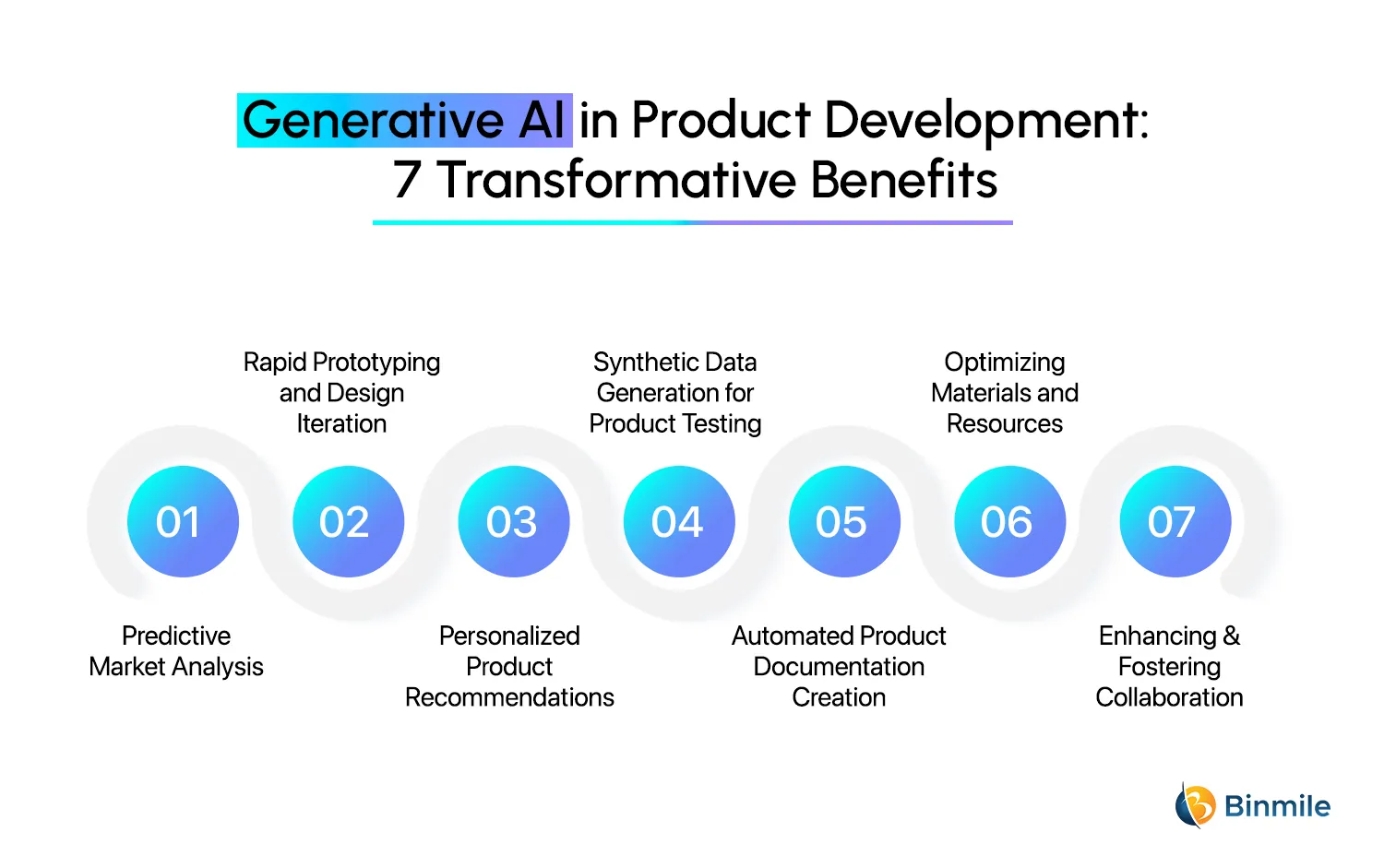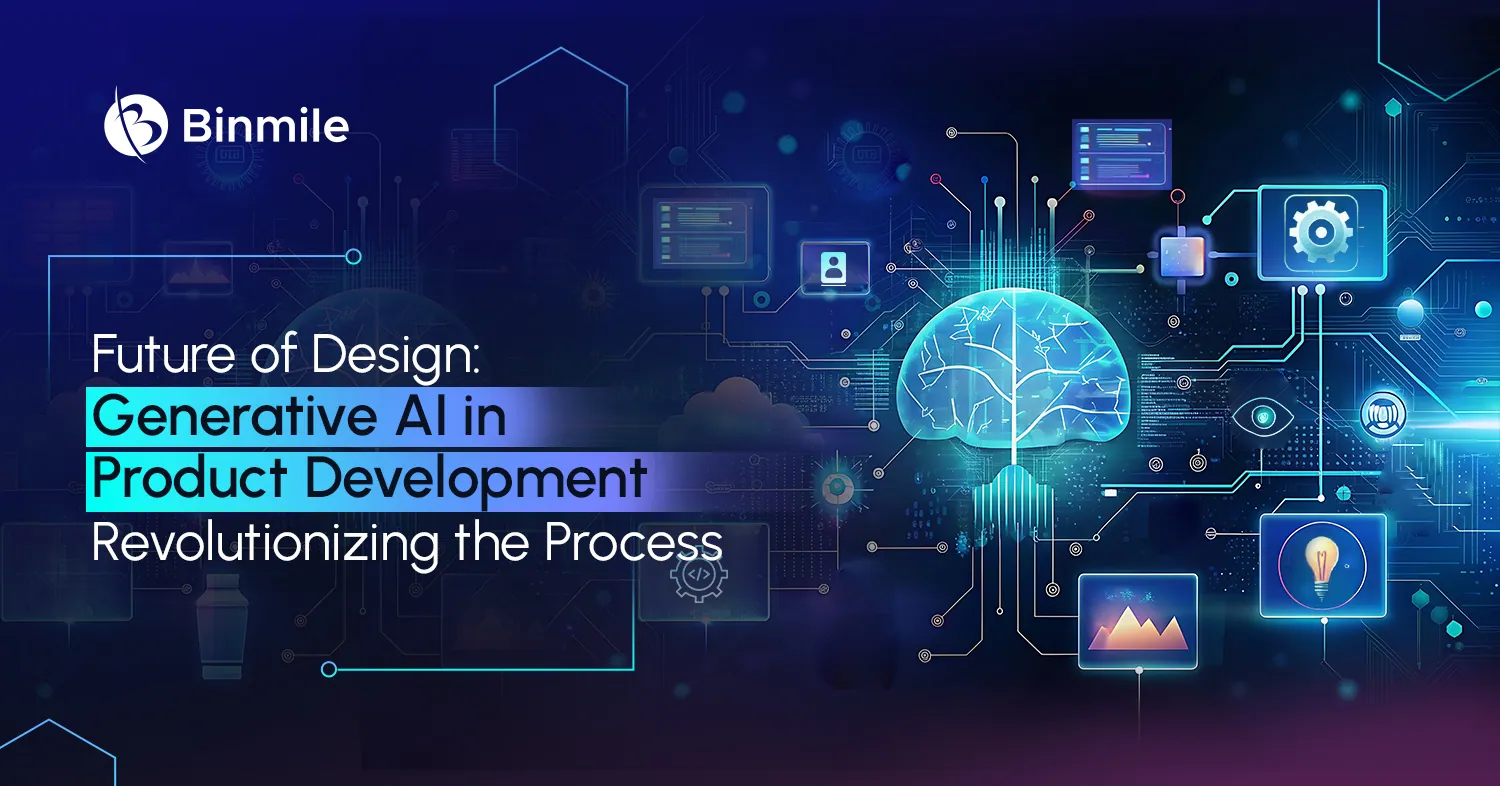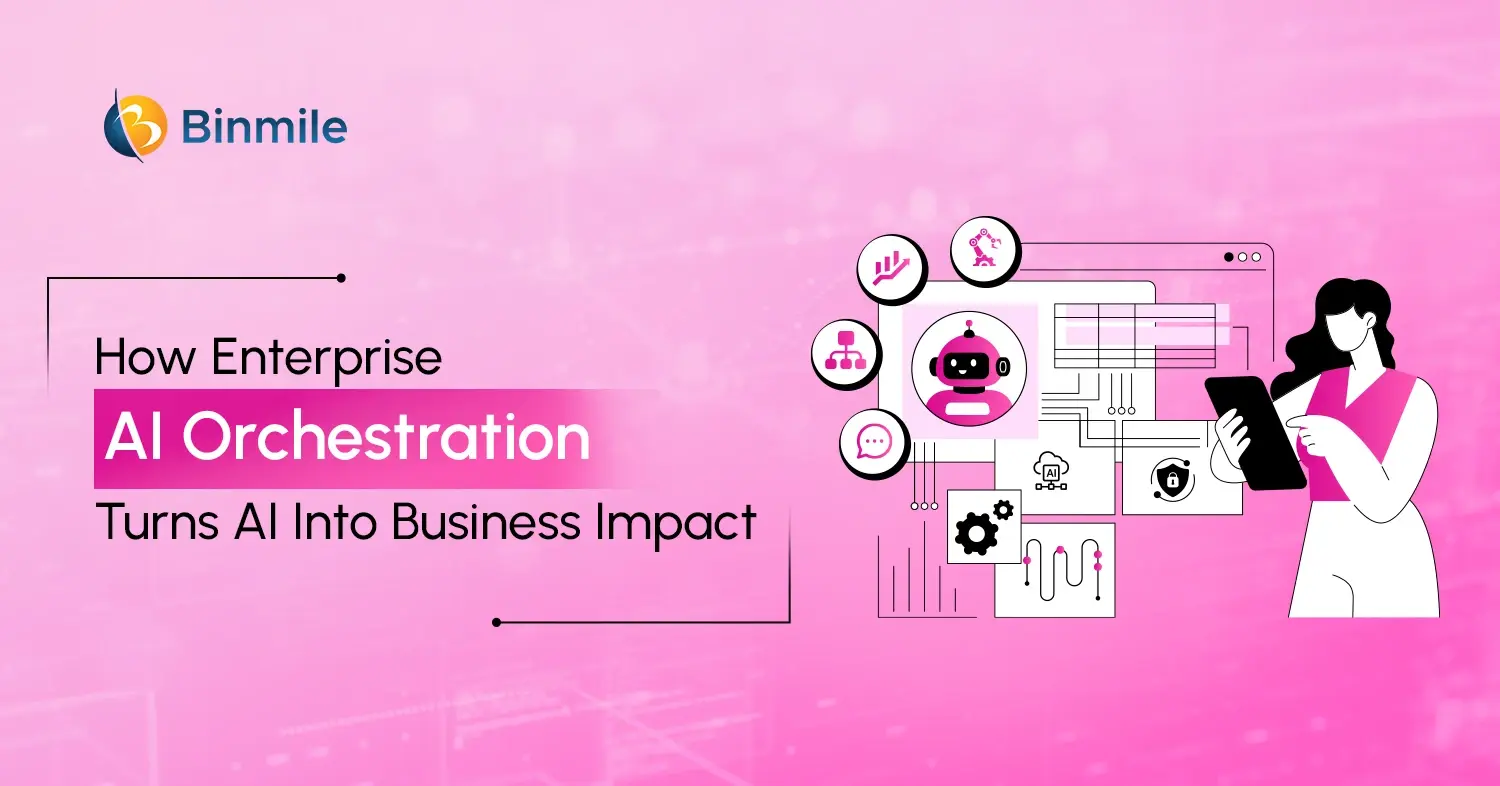With the advent of advanced technologies such as artificial intelligence, IoT, machine learning, and generative AI, they have been redefining how businesses offer, develop, and even deliver digital products. Amongst these transforming technologies, it makes the loudest noise, all thanks to its capability to use advanced Generative AI design tools or algorithms to produce new, unique content based on patterns and data it has been trained on. Moreover, what makes generative AI in product development an innovative solution is that, unlike traditional AI, which relies on programming, the former is capable of generating outputs independently. Thus, it’s turning out to be ideal for tasks requiring creativity and ingenuity, especially in development.
No doubt, businesses are quick to jump on this tech wave, seeing how this transmuting technology is reshaping the product development landscape. The market is also witnessing this upward trend. It’s projected that the generative artificial intelligence market will be worth $1.3 trillion in 2032, which is a remarkable surge from its valuation of $40 billion in 2022. Therefore, as a business owner, if you plan to adopt Generative AI product design in the process, this blog is for you. We’ll explore 7 ways GenAI is transforming product development, the benefits of using Generative AI in product development, and also specific Generative Design AI Model use cases.
7 Ways Generative AI in Product Development is Reinventing the Process
Generative artificial intelligence is revolutionizing various industries, and product development is no exception. So, let’s understand how generative AI in product development is transforming development:

1. Predictive Market Analysis
Generative AI models can review great volumes of data concerning the market, consumers, and even users to forecast the potential prospects for products. This allows businesses to form a data-driven decision on what kinds of products would be good to create and how they should be marketed. This not only saves them from investing in products that won’t do well later, but it also lets them identify potential gaps in the market and anticipate emerging customer needs.
2. Rapid Prototyping and Design Iteration
Utilizing generative AI in product development lets designers generate a variety of versions after one set of instructions, which saves their time and allows them more time to explore other possibilities in less time. This fast prototyping serves to speed up the cycle of design and development, where teams add incremental value to products to make them better.
3. Personalized Product Recommendations
Generative AI can generate product recommendations based on the attributes of users, including their relevant behaviors. Not only does this improve the customer experience, but it also gives the product development experts an insight into what features or designs are popular among a particular portion of the target population.
4. Synthetic Data Generation for Product Testing
With its capability to create synthetic datasets that mimic real-world scenarios, Generative AI allows for more comprehensive product testing without the need for extensive real-world data collection. It not only automates test data generation with high efficiency and without privacy concerns but also enhances the quality of products and shortens the time to launch new products and services.
5. Automated Product Documentation Creation
With its ability to ‘understand’ and ‘interpret’ data quickly and accurately, Generative AI can sift through information and present it in an intelligible, intuitive, and meaningful format. Thus, Generative AI in product development can be used to draft product descriptions, user manuals, and technical documentation. This not only saves time but ensures consistency across all product-related content, improving the overall quality of product information available to both internal teams and end-users.
6. Optimizing Materials and Resources
Leveraging generative AI in the manufacturing industry can help them create product designs that will maximize the utilization of materials so that waste is minimal during development. Engineers are thus assisted by the GenAI in deciding the diverse requirements for material functionality as well as efficiency in different situations. Doing so not only allows for resource allocation and optimization but can help businesses reduce any negative impact on the environment during the manufacturing process.
7. Enhancing & Fostering Collaboration
Generative AI democratizes the design process for product development teams. It facilitates a seamless exchange of ideas by generating diverse design options that can be easily shared and discussed among team members, whether they’re experienced designers or non-designers. Thus, it blurs traditional role boundaries, fosters a more collaborative approach, and encourages diverse perspectives that ultimately lead to more innovative and well-rounded product designs.
Ready to turbocharge your product development? Hire our dedicated and innovative Generative AI development services!

5 Steps for Successful Integration of Generative AI in Product Development Project
We have discussed the major benefits of using generative AI in product development, so next, let’s help you navigate using AI in product development without facing challenges like data quality, biased mitigation, or even technical illiteracy. We’ve put together a list of the 5 best practices for you to excel at generative AI product design:

1. Define Clear Objectives and Use Cases:
Determine which aspects of your product development cycle might be improved. Set specific objectives and metrics to measure its success and effectiveness. Doing so ensures that generative AI implementation serves your product’s best interest and creates value for your business.
2. Selecting the Right Generative AI Model
For this, consider factors such as your objectives with generative AI, the kind of data you’d like to work with, or even the complexity required to meet your needs. The most popular Generative AI models include:
- Generative Adversarial Networks (GANs) are excellent for generating realistic and diverse outputs.
- Variational Autoencoders (VAEs) help in generating new data points within a specific latent space.
- Flow-based Models are the perfect choice for high-dimensional data generation.
3. Ensure Data Quality and Ethical Considerations
Ensure that data is collected, cleaned, and validated to format a dataset that will meet your project’s data quality standards. Additionally, establish appropriate measures and guidelines to address ethical concerns, data usage, and bias mitigation to keep the product delivering fair and reliable AI-generated outputs.
4. Start Small and Iterate
Begin with a small pilot project or proof of concept to test Generative AI in controlled environments. This helps you in evaluating how the technology might work, what sort of issues might occur, and gather valuable insights without significant risk.
5. Foster Experts Collaboration
Develop harmony between cross-functional teams that have both AI expertise and domain-specific knowledge. Such cooperation leads to GenAI solutions that are both technically relevant as well as feasible for enhancing your product development. Therefore, encourages enhanced communication and knowledge sharing among team members to close the gap between available AI solutions and real-world product requirements.
Additionally, continuously work on enhancing your generative AI in the product development process. You can do it by refining the Generative AI design tools and algorithms, implementing necessary iterations, and finding new trends or opportunities for AI integration in business.. This helps you maintain relevance and deliver sustainable results by upgrading your GenAI strategy and your GenAI solutions.
Let our cutting-edge AI development services help you take your product development to the next level!

Summing It Up
Generative AI is one technology that’s already bringing indelible changes in the way digital products are being conceived, innovated, and designed. However, generative AI in product development is rapidly evolving, and as it does, it’s expected to add more capabilities to simplify the handoff between design and engineering. Businesses must be ready to adapt to it; only then will they be able to accelerate software product development services or engineering solutions to meet the demands of today’s modern consumers. An AI software development company can play a crucial role in helping businesses navigate this transformation, ensuring seamless integration of AI-powered solutions. Hopefully, this blog has given you deep insight into how Generative AI product design is redefining the way businesses can imagine, produce, manufacture, and deliver their services or products.
However, there’s still a long road ahead for full generative AI adoption as it still faces challenges such as data quality, biased models, and more that enterprises need to overcome. By employing diverse training sets, high-quality datasets, and crafting an effective product development strategy with the help of a generative AI product development expert, these hurdles can be mitigated. No matter where you are in adopting generative AI for software development or business operations, our Generative AI solutions will help you harness its power responsibly to transform operations, accelerate value creation, and mitigate risks.
Frequently Asked Questions
AI in product development can drastically reduce design time by generating multiple product iterations based on performance and design constraints. Instead of manually creating prototypes, AI tools like generative design platforms use data inputs to suggest optimized versions in minutes. This helps teams move faster, experiment more, and bring products to market quickly—saving both time and cost in the long run.
Absolutely. Small businesses often face limited resources, and AI product development tools can be a cost-effective way to innovate. Whether it’s analyzing customer behavior, automating workflows, or rapidly generating prototypes, AI levels the playing field. Many SaaS-based AI solutions offer affordable pricing and are scalable, meaning you can start small and grow without massive infrastructure or development teams.
Yes, when implemented with the right practices, AI in product development is both secure and reliable. Security depends on how data is collected, stored, and processed. Trusted AI product development companies adhere to international data protection standards and implement ethical AI models to minimize bias and ensure fairness. It’s crucial to audit and monitor AI systems regularly to ensure they deliver consistent, unbiased results.









